The value of good design, the knowledge of the dynamics that affect the sector, the sustainable vision on the lifecycle of the product and many other topics that are integrated increase the complexity of machines that must be increasingly safe, performant and intelligent. Home appliances, small or large, are indispensable for daily life and for this reason they must be conceived, developed and produced in a perfect way
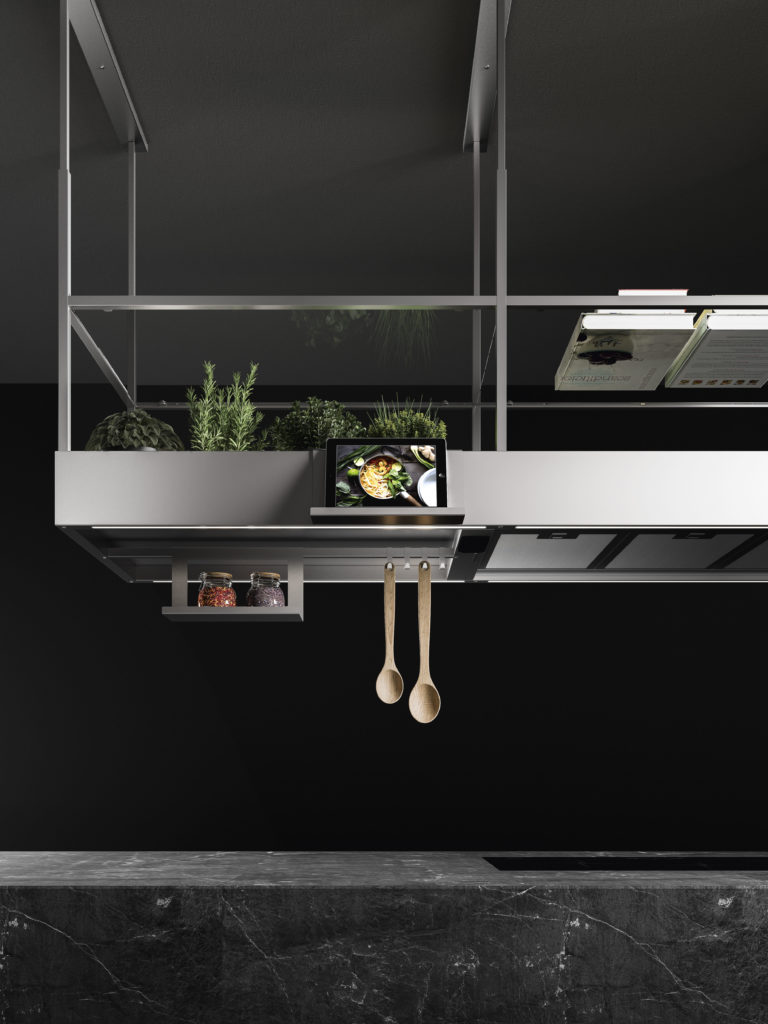
by Sabrina Piacenza
Developing an appliance, whatever it is, is a complex and articulated job that requires the integration of fundamental skills to create a perfect machine, aesthetically pleasing but with professional functions, easy to use and able to guarantee excellent results under every point of view. Exactly for this complexity, there are many variables to consider and the constant dialogue between designer and manufacturer turns out to be fundamental, to guide choices and solutions, considering how it is necessary to reason on a large scale and on a mass-production and how every single component is essential for the correct functioning of the machine.
An integrated approach therefore that, beyond the thought about the form, investigates the behaviour of materials, the containment of dimensions, the dialogue and interaction with man.
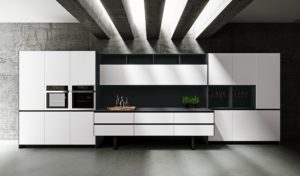
This is why the relationship between designers and R&D offices of companies must be continuous and feed by tests and verifications, in order to improve the behaviour of the appliance, raising its performance and technical characteristics. From the aesthetic point of view, the continuous research on materials and finishes has allowed in these years to develop integrated collections with a stylish and sophisticated mood, but also to customize products, making them further more exclusive. A deep approach to the theme of the project, a series of specific dynamics related to the regulations that affect the development of the appliances, an attention to costs and consumption, all aspects to be considered in the design phase.
We asked to some designers, who have designed an appliance, to tell us about their approach to this issue, trying to analyse the specificity and the parameters that contribute to the final result.
A difficult challenge
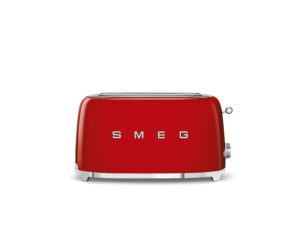
Before we get into the specifics of individual projects we did a step back, asking designers to tell us how the approach to the development of an home appliance may be different compared to the development of a chair, a container or a lamp.
For Deepdesign, the Milanese studio composed by Matteo Bazzicalupo and Raffaella Mangiarotti
«Each product has its own complexity and before designing it you have to ask yourself many questions and try to ask the right ones, whether you work on a chair or on a small appliance. What changes are the logics of the sector. Not all sectors have the same logics and the same degrees of innovation. If you are an outsider, you can have a beautiful and original idea just the same, but not knowing the industry it is not very easy to immediately understand the logics that define its commercial success.» 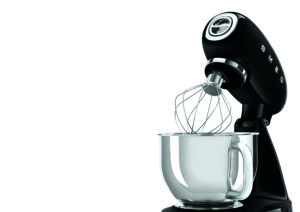
«The fundamental thought of design is the same as always, identical for all projects – tells Makio Hasuike, Japanese by birth but Italian by adoption, owner of the homonymous studio, one of the first Industrial Design studios born in Italy. – The changes occur for a specific reason that characterizes each of the projects. In the specific case of household appliances, it is necessary to consider the production numbers and consequently to better understand the industrial process, as well as being aware of the technical and technological possibilities and limits. It is necessary to have a thorough knowledge of the characteristics of the used materials, the safety regulations. I have worked for many years in the household appliance sector and I can say that functionality is fundamental. The relationship with the kitchen environment is another important condition. The request to raise the sense of quality and take into account the economy of the finished product is not a simple task.»
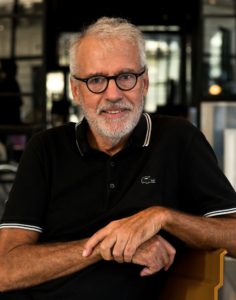
For Marc Sadler, “technical” designer , born in Austria but of French nationality with a studio in Milan and winner of several Compassi d’Oro, instead: «If not the same it is at least very similar. In each new project the requirements of practicality and functionality are foregone, at least for me, regardless of the product sector. On the other hand, as I often say, industrial design is not a free artistic expression, but a creative service related to industry whose result must respond to very precise market targets. As if to say: the methodology in the kitchen is the same, but the ingredients change according to the recipe.»
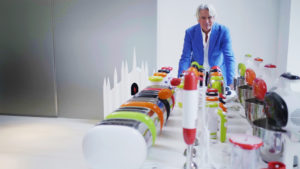
On the same wavelength Luca Trazzi, Italian designer and architect with a great experience in product design. «The approach to the project is similar but it is necessary a specific, very technical and engineering competence. I have always designed home appliances: refrigerators, coffee machines (Illy, Cimbali), small domestic appliances. My studio is very structured to develop this kind of products, I work with a team of engineers of which I could not do without. As with all products, they must be calibrated with the customer and with the companies you work with, where production will then take place. I take great care of the production, I scrupulously follow the product in the factory with my engineers; it is essential for the success of a product.»

Also very clear is the thought of Adriano Design, a multidisciplinary design studio founded in Turin by the brothers Davide and Gabriele Adriano. «We design “unique” objects in terms of character, emotion and usefulness, products able to create a desire for affection in the consumer, products made to be iconographic and eternal. We believe that in the longevity of the product we can hide the “solutions” to business success and social and environmental sustainability. Our approach is always the same, whether they are companies that produce coffee machines, as in the case of the creation of the Storm brand for CMA, or whether it is a stove, as in the case of the creation of the StackStoves brand for La Castellamonte, or whether they are household appliances such as in the case of Tre Spade with the Takaje project, winner of the Compasso d’Oro in 2014, or Fabita.»
Success starts from afar
The design of the appliance is a complex issue because these machines have always had the aim of simplifying human life and facilitating the performance of daily actions. Ambitious goal, which can only be achieved through a clear brief, a precise concept and a total sharing on the development of the project. For this reason we asked the designers to tell us about the genesis of their projects.
«We started by defining the DNA, the genetic code of a collection of small appliances for Smeg – Deepdesign tells – Designing a product or a collection requires different effort and attention. Designing a collection does not mean thinking of a product with an appeal, but designing founders that have strong and iconic characteristics, so that they can be parents of other children, without watering down and fading during the reproductive process. We were inspired by the soft forms of FAB28 refrigerator, but we defined new curvatures, the double body separated by a median line, little feet that become a stability element balancing the grace and the lightness of the forms, and all those linguistic details, from the little levers with the spheres, the knobs, the buttons that in a short time have become so iconic to become inspiration for other products.»

«I love kitchen and cooking – says Francesco Lucchese, who actively collaborates with Falmec -. Hood is one of the machines that I consider indispensable to make the activity around the fires work. In the case of Spazio, the hood I designed for Falmec, it was nice to imagine that in addition to performing its function it could be enriched with a suspended garden to have the necessary aromatic plants for any dish. If you love the context, it is not important what to design, but how to do it.»
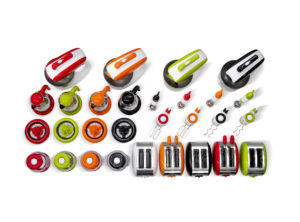
«I knew Kasanova well – Luca Trazzi reveals -. They had desire to change status: from importers to producers. The collection of small appliances was born to connote the brand, created only for them, raising very much the quality level. The production is very rigorous and is carried out between China and Vietnam, the design is Italian. We have focused very much on electronic components and the highest quality materials: steel, plastic with a strong sustainable part, all recyclable materials, packaging restraint. I personally selected the suppliers of the highest quality materials, lasting a long time, we did not want a short-lived product. It is a project that I like to call Democratic Design.» The appliances of the K series of Kasanova are characterized by soft lines with a very refined style, high quality of materials, certified components that guarantee the maximum of performance and reliability with a range of price deliberately “friendly”.
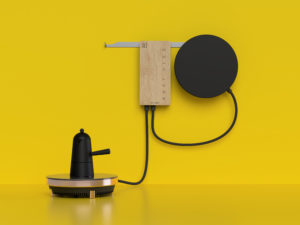
«With Fabita – Adriano Design tells – we have worked on a brand repositioning project, taking it from a pure OEM manufacturer to a market protagonist, able to surprise, making people talk about itself and its products, capable of becoming a reference point for the innovation and also to sell under its own brand. We worked on the transformation of the “kitchen space” through the hob revolution by creating a series of unique products in terms of functionality and character. Products were born like ORDINE, the hob that frees up the space dedicated to cooking by continuously changing its operating layout. A hob that can take up the space of one or two burners according to requirements, which can move the cooking zones away from each other when pots are large or disappear from the worktop by hanging on the wall when not needed.»
Finally, Marc Sadler who continues in the fruitful collaboration with Tecnoinox. «Satisfied by the success of the TAP professional oven conceived a few years ago, the new Tecnocombi ovens reconfirmed the same targets: high performance associated with ease of use. Keywords around which to build the project, taken for granted the quality of the materials and used technologies – all elements more than acquired for Tecnoinox – the quid of the product is exactly its ergonomics and intuitive operation, proved to be strengths for the appreciation by users, who like the awareness of the use of the product in a professional kitchen, in phases of use often concentrated in a few but extremely busy hours of the day.»
Sustainability and lifecycle
End of life disposal, possibility to recycle the materials and individual used components, containment of energy consumption and conscious use of resources. LCA (Life Cycle Assessment), the product lifecycle is one of the most explored and most current topics in the home appliance sector. Why is really a value thinking in these terms from the design stage?

«The Life Cycle Assessment is a complex tool – Deepdesign explains – We have had previous experiences. I (Raffaella) did a doctorate on this issue at the Milan Polytechnic University and I wrote a book for the environmental impact assessment of complex products at the end of an experience conducted in two research centers, in Germany and Sweden. I also taught LCA for five years at the Polytechnic in Milano in design workshops. We can say that the preparation and predisposition to work seriously in an environmental sense is not lacking.»
For Makio Hasuike the LCA should condition the project a lot “naturally”.
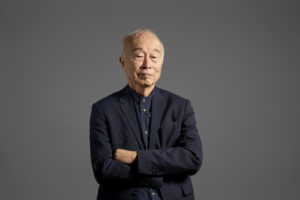
«But it is not easy to propose it, beyond the production system of the company. What we have applied, therefore, is the possibility of easier disassembly the various elements that make up the products in order to separate each type of material and be able to recycle it. The topic is of fundamental importance for the future. In order to create truly futuristic products, there is still a lot to do.»
Maximum attention on the subject also by Marc Sadler. «The theme of the lifecycle is decidedly central in Tecnoinox, so much so that materials, technical solutions and components are systematically chosen to maximize the durability of the products and facilitate the possible replacement of parts that, in the long term, can wear out. The projects are conceived also thinking of reuse (they are easily reconditionable) and recycling opportunities. More generally, it is clear that a careful preventive assessment of the product lifecycle can no longer be ignored, with sustainable upstream choices that must be the priority of any designer or entrepreneur with a minimum of conscience regarding what is happening to the planet.»
Luca Trazzi also agrees, «LCA influences the design and production process very much. The small appliances developed for Kasanova are 100% certified to be exported and sold all over the world, a process (certifications) that is very expensive and rigorous. The collection has obtained international certifications (recycling, disposal of the materials you use, food plastics, compliance with international standards). We have a great knowledge of these themes and parameters. Also and above all in the design phase because we make products that have to do with water, electricity and food.»

Also Francesco Lucchese highlights how Falmec has strong feelings on the issue of environmental protection and in particular is very active on the steel material recycling . «For this reason we have built together a concept that, in addition to the aesthetic characteristics, responds to keeping the innovative role in the kitchen area as long as possible given the multiple upgrades it features.»
The impact of technology in the kitchen
Today one of the essential factors in the kitchen environment design is precisely the correct insertion of household appliances, the way with which the machines interact with furnishings, finishes and materials that make up this space.
An integration that necessarily passes through the functionality, ergonomics and correct placement of the machines within the environment but which also contemplates the formal aspects to create domestic landscapes coherent with the style and personality of those who live them.
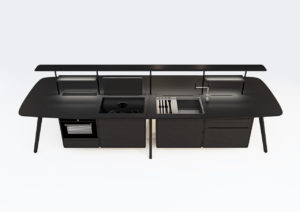
Kitchen is a lively and articulated environment, the appliances are part of it, it could not be otherwise, it is a symbiotic union between furniture and technology, a complex organism.
We explored these topics with the designer Aldo Parisotto, co-founder of the Parisotto + Formenton Architetti studio.
«Nowadays kitchen, like any environment where daily human activities take place – at home as well as in the workplace – is designed around people. It is therefore the new behaviours and habits, the new ways of moving and relating with others and with the objects that dictate the design guidelines. Kitchen has become the undisputed protagonist of contemporary houses also thanks to a greater interest and increased competence regarding food and gastronomy: it is a place of preparation, but also of relationships and conviviality. So no longer just a service, technical environment, but a place where people are received, the intimate, private and at the same time open heart of our homes.»
Speaking specifically of appliances, how does their presence affect the design of the space?
«Technology is increasingly present in our homes – Aldo Parisotto continues – home automation, voice assistants, entertainment or security devices are presences to which we are now accustomed. Kitchen has been a pioneer in this sense because the technical help devices (for the preparation, cooking and storage of food or for cleaning) have always been guests of this room in the house. Current appliances are increasingly sophisticated in design too and decades ago abandoned the aseptic “white look” of the beginning, marrying differentiations in style, materials and design to combine with the different environments in which they can be placed. Indeed, today the appliance is no longer camouflaged, but in its most hi-tech forms it becomes the protagonist of the aesthetics of kitchens. Designing kitchens in our home projects we always take ergonomics, paths, lighting into consideration for optimal use and the best possible experience in preparing recipes, integrating the most innovative appliances.»
In this context, the evolution of the kitchen environment has often led to a different placement of appliances in the space but above all to the affirmation of the identity of the machines and their highlighting within the space.
«The kitchen – Parisotto adds – has evolved perhaps more than any other environment: more sophisticated technologies and better designed spaces; new ways of living the home impose a new centrality and new rites around the table and the cookers. We have therefore seen how many household appliances have become more prominent, some are even status symbols to show: wine cellars, blast chillers, food dryers that until a few years ago were present only in the professional kitchens of restaurants have landed in those of the domestic “masterchefs “.»
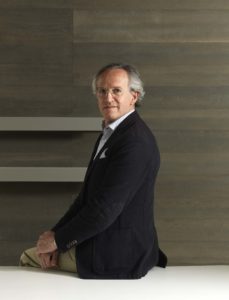
Alfredo Zengiaro, architect owner of the homonymous studio that collaborates with various design companies also of kitchens, among which Febal, starts from a different approach and proposes a design modus that tends to limit the impact of household appliances.
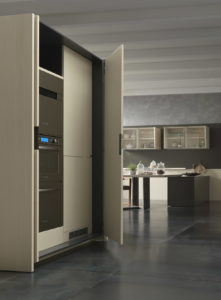
«My design focus today is directed towards a kitchen project where home appliances tend to camouflage if not completely disappear. Kitchen becomes more and more a fluid space in continuity with the living room and therefore increasingly absorbs its furniture contents. Appliances, although always a fundamental component of the kitchen as an “operating machine”, therefore tend to “merge”. As I said before, to blend in colours and finishes. And sometimes even to hide inside the columns with retractable doors. So if I had to design a hyper-technological kitchen in steel and/or metal I would enhance the operating machine through the appliances. But that’s not my thought. And I only look for those appliances that condition the setting phase of the design mood less and less.»



